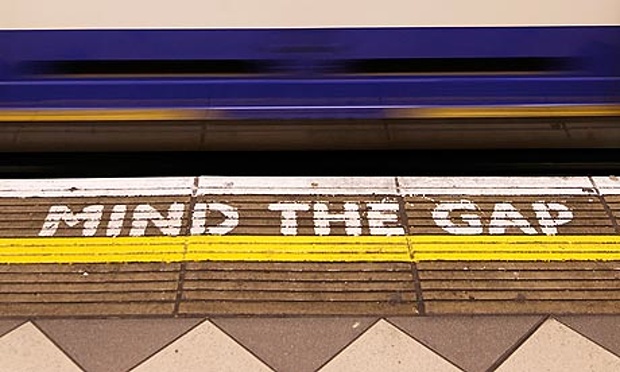
Mind the Gender Pay Gap
Tina.Freed / 27 Aug 2015
In the UK, women are on average paid less than men. The current pay gap between men’s pay and women’s pay is 19.1%, which means for every £1 a man earns, a woman earns 81p. New regulations under Section 78 of the Equality Act will require employers with more than 250 employees to report gender pay data.
The pay gap shows the difference between the average male earnings and average female earnings of all employed people in the UK. It exists for many different reasons, from women being concentrated in particular types of work (which may be lower level or low paid) to outright sex discrimination (which is known as ‘unequal pay’ and is unlawful).
To help close the gender pay gap, the British Prime Minister, David Cameron has brought forward rules to make firms with more than 250 workers reveal whether they pay men more than women. The idea is that greater transparency will force businesses to take action to close their gender pay gap and accelerate the pace of change towards gender equality. The government has opened a public consultation to understand how best to implement the law; businesses and individuals can respond to this consultation.
The gender pay gap exists because women are concentrated in lower status and lower paid jobs and industries; they are more likely to be working part-time and they are more likely to take on most family responsibilities. Traditional “women’s work”, such as caring and teaching, are undervalued in society, and so the pay is often lower than in traditional “men’s work”. There is still evidence to suggest that some women are being paid less than men for doing similar work, or work of equal value – and this is unlawful.
The gender pay gap exists despite girls out-performing boys in GCSEs and A Levels, and despite more women graduating from university than men. In 2014, girls outperformed boys in achieving A*-A grades in every major subject except maths – where the gap was only 1.1%. Yet gender stereotyping gets in the way of girls taking these subjects further, and contributing their talent and skills to our society and economy.
Gender Pay Gap Statistics:
- The gender pay gap has a significant impact on the UK economy, households and businesses. It contributes to the loss of between £15 and £23 billion of gross domestic product every year.
- The impact on families and children should also not be underestimated. The National Equality Panel revealed that in a survey of 250,000 households, 19% were headed by a female breadwinner.
- The UK has fallen down the rankings of the World Economic Forum’s Global Gender Gap Index 2014 – from 18th to 26th.
- The gap for all employees (full time and part time) in 2014 was 19.1%. The gap is calculated by working out the average (median) hourly rate of male and female employees.
- For full time employees only, the pay gap was 9.4% in 2014.
- The gap has been consistently bigger in the private sector than in the public sector – in April 2014 it was 17.5% in the private sector and 11% in the public sector.
- In the long term, the gap has decreased significantly from 27.5% in 1997 and 25% in 2004 to 19.1% in 2014.
- Currently, 64% of the lowest paid workers are women.
If we are serious about closing the gap and achieving true gender equality – both at work and in the home – we must all take responsibility in encouraging both girls and boys into the broadest range of careers. We are realising that both women and men are caring and can care, just as we have realised that both women and men can succeed in business and political life.
It is time we start focusing on the similarities between girls and boys, and their capabilities, not their gender. It is time we start valuing women’s contributions more highly in our culture.
One of the main solutions is to have a real culture change, where businesses must make the working environment and conditions more pro-women with flexible working arrangements, greater support for those caring for children or relatives and mentoring by senior managers. These are strong initiatives to help employees of both sexes. Change the culture and it will go a long way to closing the gender pay gap.
Till now in the U.K., there has been a voluntary approach for companies to publish their gender pay gap for their workers. The CBI, the industry group representing major businesses, said it would rather continue with the voluntary approach and argues the information “could be misleading”. However, it pledged to work with the government to try to ensure flexibility in how the new rules are applied to each company.
On a more global note, gender inequalities are still large and persistent in all countries. UN Women has said worldwide women are paid less than men; women in most countries earn on average only 60 to 75% of men’s wages. It is calculated that women could increase their income globally by up to 76% if the employment participation gap and the wage gap between women and men were closed – it is calculated to have a global value of USD 17 trillion.
It is time we closed the gender pay gap.
Back to blog



 Women in Financial Services
Women in Financial Services